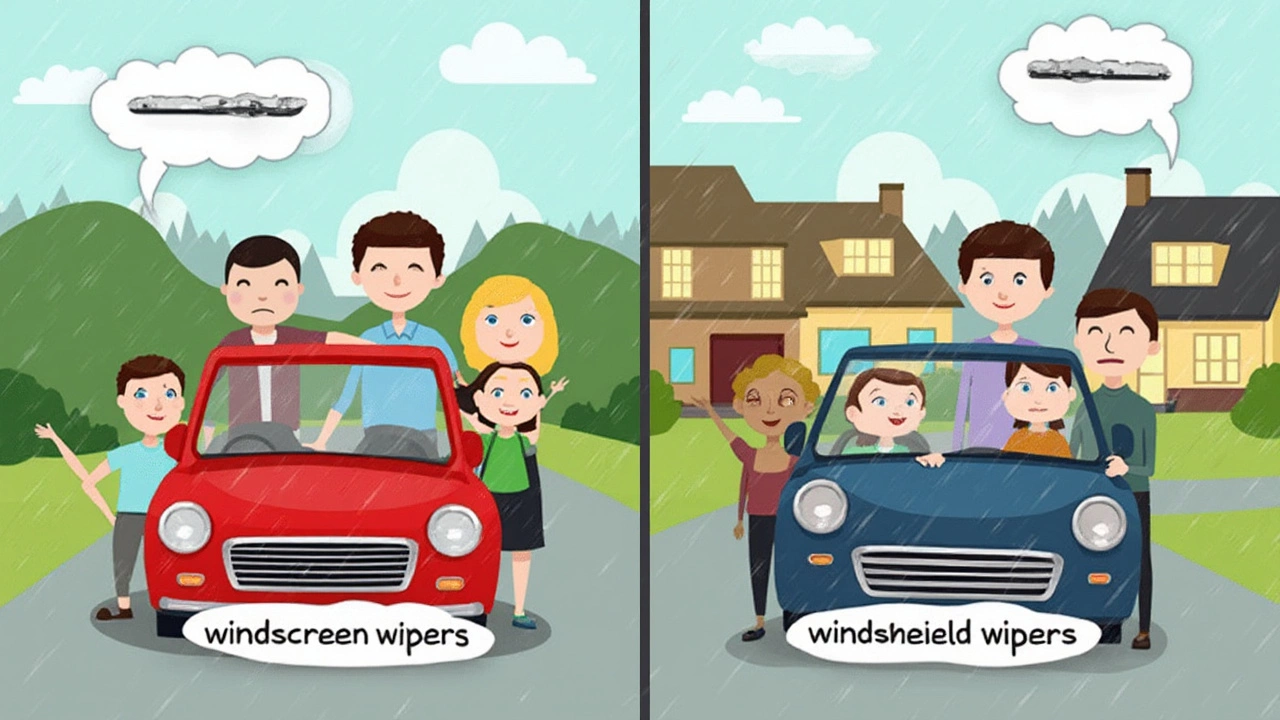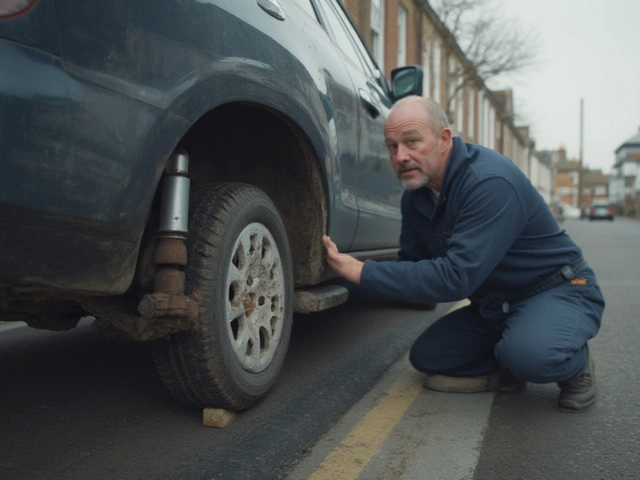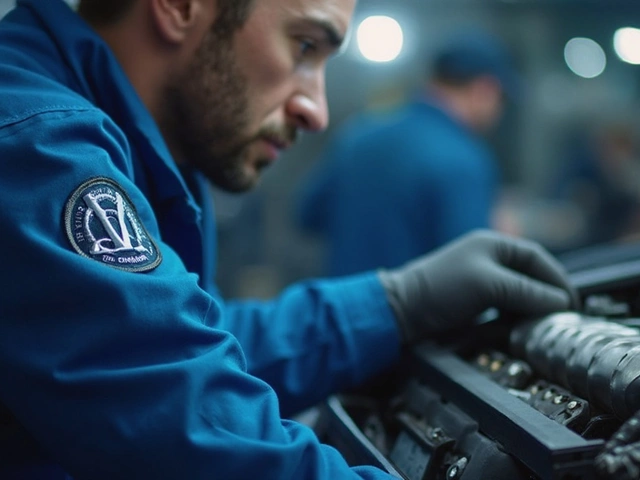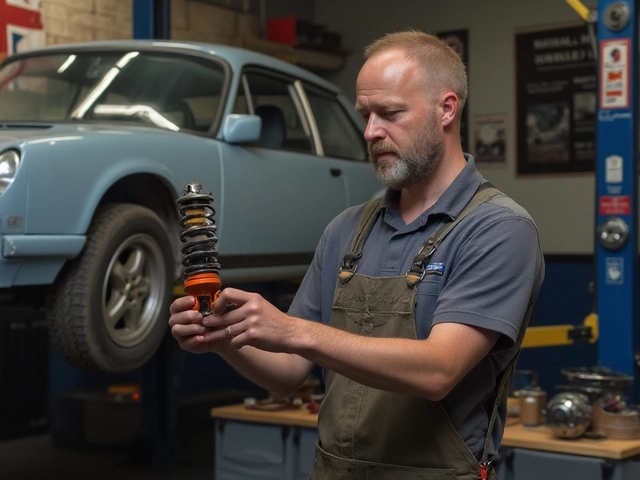Ever stood in a parking lot arguing with a friend about whether it’s ‘windshield wipers’ or ‘windscreen wipers’? You’re not alone. Car owners all over the world have wondered which one is correct. Actually, both terms are right—it just depends on where you’re living or who you’re talking to. In the U.S., people say ‘windshield wipers’; jump over to the UK or Australia, and it’s automatically ‘windscreen wipers.’ Same part, different name.
This difference might seem like just another language quirk, but if you’re hunting for replacements online or reading your car manual, it helps to know both. Otherwise, you could end up scratching your head in the auto parts aisle. And by the way, the name you use doesn’t change how these wipers keep your view clear when you’re driving in the rain, snow, or bug-splatter season. You’ll find the same essential function—just mind the label.
- A Tale of Two Terms
- Where in the World: Regional Usage
- How Wipers Got Their Names
- Wiper Technology: What Actually Matters
- Tips for Buying and Maintaining Wipers
- Fun Facts You Didn't Expect
A Tale of Two Terms
So, why do some people say 'windshield wipers' and others insist on 'windscreen wipers'? It all boils down to regional language differences. Americans almost always use the word 'windshield,' while folks in the UK, Australia, South Africa, and a few other spots prefer 'windscreen.' It’s the same piece of glass and the same gadget keeping bugs and rain out of your line of sight—just two words for the same thing.
The word 'windshield' started popping up in the U.S. around the early 1900s, mostly because early cars needed something to block the wind at higher speeds. Across the Atlantic, British drivers got the same idea but went with the word 'windscreen.' Both terms stuck, and now each country just follows its own habit. If you look up car parts in a US auto store, you’ll find windshield wipers on the shelf. Visit a UK shop and you’ll see 'windscreen wipers' labels everywhere.
Here's a quick look at which term you'll hear in different English-speaking countries:
| Country | Common Term |
|---|---|
| United States | Windshield Wipers |
| Canada | Windshield Wipers |
| United Kingdom | Windscreen Wipers |
| Australia | Windscreen Wipers |
| South Africa | Windscreen Wipers |
So when you're searching online or asking someone at the parts counter, save yourself a headache. Just use the term that matches your region, and you’ll find what you need in half the time.
Where in the World: Regional Usage
If you’re a driver, it’s easy to get tripped up by car part names that change across countries. ‘Windshield wipers’ is the go-to term across the United States and Canada. Slide over to the UK, Ireland, South Africa, Australia, and New Zealand, and you’ll hear ‘windscreen wipers’ everywhere. Same part, just a different label depending on the map.
No one’s trying to confuse you. The difference comes from how English words evolved on each side of the Atlantic. Americans and Canadians say “windshield” for that piece of glass at the front of your car; British English speakers say “windscreen.” Many manuals and product listings sort their language to match local usage, though you’ll see a mix online, especially from global sellers.
If you look at parts catalogs or search online stores, you’ll find some clever retailers will list both terms just to catch every shopper. That’s why searching with both terms can help you find more options, or even snag a deal others miss.
Here’s a quick country-by-country breakdown, so you don’t have to guess next time you’re trying to order the right thing:
| Country/Region | Common Term |
|---|---|
| United States | Windshield wipers |
| Canada | Windshield wipers |
| United Kingdom | Windscreen wipers |
| Australia | Windscreen wipers |
| New Zealand | Windscreen wipers |
| South Africa | Windscreen wipers |
Here's a tip: when you’re traveling or renting cars overseas, don’t get thrown off if the manual doesn’t mention 'windshield wipers’—it’s there, just look for ‘windscreen wipers.’ And if you’re ordering online, double up your searches with both terms to make sure you’re not missing out.
How Wipers Got Their Names
Let’s rewind to the early 1900s, back when cars were just starting to fill city streets. The idea for the very first automatic wiping system came in 1903 from Mary Anderson, an inventor from Alabama. She filed a patent for a swinging arm with a rubber blade that would clear the front glass on a car—what Americans called the “windshield.” The name stuck. In the U.S., “windshield” was locked in, so naturally, the cleaning part became known as windshield wipers.
Hop across the Atlantic, and British car makers and drivers had a different word for the same pane of glass: “windscreen.” It’s the same thing—a barrier at the front of the car to stop wind, rain, and anything else coming at you—but the word choice differed. Since the Brits were already saying “windscreen,” their wipers got the same tag, turning into “windscreen wipers.” It’s just language evolving differently on each side of the pond.
You’ll still find “windshield” and “windscreen” in old owner’s manuals and car ads, mainly depending on which country the publication came from. And it’s not just about English—if you look up the same part in a French or German manual, you’ll get their own local word. But the American and British terms are the ones you’ll run into most if you’re reading car guides, shopping online, or talking to mechanics in those countries.
So whenever you see either of these names, just remember: they both mean the same thing. You don’t need a translation guide—just pay attention to who’s saying it and you’ll fit right in.

Wiper Technology: What Actually Matters
It’s easy to think all wipers are pretty much the same, but a quick look at what’s on the shelf proves that wrong. These days, you’ll see different sizes, shapes, and high-tech features, and it’s not just about slapping on some rubber and hoping for the best. The real difference is in the design and material.
For starters, wipers come in three main types: conventional (frame-style), beam (flat), and hybrid. Conventional wipers have a metal frame and are usually the cheapest, but they can leave streaks over time. Beam wipers are made from a solid piece of rubber and keep even pressure across the windshield, so they work better in heavy weather. Hybrid wipers mix bits of both—they look a little sleeker but aren’t quite as fancy as beam versions. If you drive in snowy or icy places, beam wipers don’t get clogged as easily.
It’s not just the style you need to think about. Wiper blades now use different rubber blends, like natural rubber, silicone, or even treated blades that promise less squeaking and longer wear. Silicone blades, for example, shed water better and last up to twice as long in some real-world tests. If you’re the kind of person who pushes wipers to their limits, this can save some cash in the long run.
| Type | Durability (Months) | Best For |
|---|---|---|
| Conventional | 6-12 | Budget replacements, mild climates |
| Beam | 12-18 | Heavy rain/snow, premium performance |
| Hybrid | 10-15 | Mixed climates, style and function |
Wiper size matters, too. Measure your old ones or check your car’s manual before you grab new blades. Too long or too short, and you’ll end up with bad coverage or the wiper arms crashing into each other. A lot of cars use different sizes on the driver and passenger side, so don’t just buy a random pair.
Another thing most drivers ignore is the seasonal swap. If you drive where winters get nasty, look for wipers made for snow and ice. They stay flexible in cold weather, and some are even built with special coatings or frames that stop them from freezing up—huge if you hate scraping ice off before every drive.
No matter which type you go for, regular checks and cleaning help. Replace your windshield wipers about once a year, but if you see streaking—or if they start chattering—it’s time for a change sooner. Don’t just wait for complete failure. Visibility is safety, and good blades make a big difference when the sky opens up.
Tips for Buying and Maintaining Wipers
You know that feeling when your wipers start streaking, skipping, or making that awful chattering sound across the glass? Pretty annoying, right? That’s usually your sign it’s time for new ones. But not all wipers are alike, and a few small decisions can mean the difference between clear driving and a smeared mess.
- Size matters: Always check your manual or measure your old blades. Wiper sizes can vary even between the driver and passenger side. Too short and you miss spots, too long and they’ll bump each other or the edge of the windshield.
- Understand the types: Blade styles come in three main types—conventional (frame-style), beam (bracketless), and hybrid (a mix). Beam blades usually last longer and hug the glass better, especially in winter.
- Check compatibility: Some cars use unique fitting systems. Don’t get caught with wipers that won’t click on. Bring your old blade or check online guides for your car make and year.
- Budget for quality: Cheap generic blades are tempting, but premium blades usually last longer and perform better in bad weather. Brands like Bosch, Rain-X, and Valeo rank high for reliability and quiet operation.
Besides buying, keeping your wipers fresh matters too. Here’s what you can do:
- Wipe them off: Every few weeks, run a damp cloth along the rubber. Gunk and sap build up fast.
- Check for cracks: Sunlight and heat warp blades over time; you’ll start seeing cracks or splits. That’s the cue for a change.
- Don’t run them dry: If your windshield is dusty or icy, use washer fluid first. Dry wiping grinds dirt into the glass and ruins the blades.
- Replace regularly: The pros say every 6 to 12 months, but if you see streaking or skipping, don’t wait.
Here’s a quick look at how often folks actually replace their wipers and how long the average set lasts:
| Region | Average Replacement Interval | Average Blade Lifespan |
|---|---|---|
| USA | Every 9 months | 6-12 months |
| UK | Every 10 months | 6-12 months |
| Australia | Every 8 months | 6-10 months |
Taking care of your windshield wipers really pays off. Swap them out before you’re caught in a downpour with an unclear view, and your next rainy drive will be way less stressful.
Fun Facts You Didn't Expect
Wipers seems like a boring car part, but trust me, there’s some good trivia here. For starters, did you know that the very first automatic wiper was invented way back in 1903 by Mary Anderson? She came up with the idea after watching a streetcar driver stick his head out the window because his windshield kept fogging up—talk about clever timing!
The world’s largest wiper blade? It’s on the Airbus A380, the gigantic double-decker airplane. Each blade is about 1.5 meters (almost 5 feet) long. Not exactly something you can grab at your local auto shop.
Most people don’t realize that there have been some truly weird patents, too. One early design involved blowing air across the windshield instead of using a blade (that idea didn’t really take off, for obvious reasons).
Take a look at these numbers:
| Fact | Figure |
|---|---|
| Average number of wipes per year (per car) | 1,000,000+ |
| First patent year | 1903 |
| Common lifespan of wiper blades | 6-12 months |
Don’t forget, racing drivers have a weird superstition: some refuse to use their wipers unless it’s absolutely necessary, thinking the streaks on the screen show ‘true grit’ in the rain. And if you’ve ever peeked at a classic car from the 1950s, you might notice the wipers run off the engine’s vacuum—not electricity. That means when you give the car some gas, the wipers practically stop. Imagine driving through a downpour and hoping your foot stays light on the pedal!
One last fun tidbit: certain luxury cars now use sensors and tiny jets to not only wipe but also wash the windshield automatically, detecting rain before you do. Before long, windshield wipers might be another thing your car handles all on its own, no button-pushing required.






